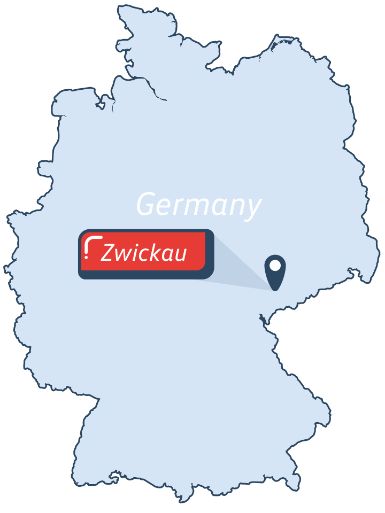Mr. Ulbrich, before we look forward, let’s first take a quick look back. Do you still remember the day when you started your apprenticeship as a car mechanic at Volkswagen?
Do I ever. It was September 1, 1983. We had a cold late summer that year, and I was so glad to finally be able to work indoors where it was warm. Previously I had worked on a construction site, always outdoors in the cold and wet.
Does it help that you know the company from the bottom up?
Oh yes, absolutely. In the more than 25 years that I have been back at Volkswagen since finishing my studies, I have worked with an incredible number of people. That means I now have access to a large network of contacts. What’s more, because I have worked in many positions – from low-level administrator up to my current role – I have learned about a lot of company processes. This has stood me in very good stead when dealing with almost any kind of problematic situation.
“We had a cold late summer that year, and I was so glad to finally be able to work indoors where it was warm.”
You mention your current role. What was your first thought when CEO Herbert Diess first approached you with his plan to put you in charge of the new e-Mobility business division?
I immediately understood that this would be the biggest and most exciting challenge of my life. Responsibility for all our company’s electric activities comes together in my new division. That’s how we create the organizational prerequisites for the electric campaign and give maximum strategic priority at the management level as well to the Volkswagen brand’s most important topic for the future. I am delighted that the company has given me the responsibility of handling this important task.
Tell us: what was your previous involvement with electricmobility?
I was already involved with electric mobility five or six years ago, when I was working in China. That was the stage when the first electric vehicles were hitting the market and becoming part of government policy. Back then, China was already further ahead on the topic of electric mobility. And believe it or not: I had already come into contact with electric mobility during my apprenticeship. There were internal vehicles that were powered by electric drives, something like a T2 flatbed truck. I used to service them as an apprentice.
Until now, the topic of electric mobility has been anchored in the G4 series. Will the series decrease in significance with the introduction of the new business division?
No, on the contrary. G4 will remain at the core of electric mobility. The series will continue to oversee all other vehicles based on the modular electrification toolkit (MEB). My business division will then be jointly responsible for ensuring that cars are ready for production on time, together with G4 and Volkswagen Saxony. Think of it as joining two ends of a rope.

The brand is investing one billion euros in the Zwickau plant and will convert it into a mecca for electric mobility in Europe. What are the benefits of this centralization?
This will gain us important financial advantages, for example through lower investments and an optimized supply chain. We are also consolidating all our knowledge in order to subsequently roll it out into the world. Not to mention the fact that this billion-euro investment will allow us to secure jobs in Zwickau.
The 7,900 employees there will be happy to hear that. However, many of them are wondering just what the switch to electric mobility will mean for their work.
Basically, electric cars still have four wheels, four doors and a steering wheel. Of course, many of the work processes will change. We have to prepare the entire assembly line for a significantly higher degree of mechanization. We plan to train parts of the assembly workforce as experts in high-voltage technology. Other employees will be trained in connectivity and Internet services; both these topics already play a big part in the I.D. series. But after all, we are not starting completely from scratch at Volkswagen Saxony. In Dresden, we have already gained experience in electric mobility with the production of the e-Golf1. Now we have to transfer this knowledge to the production of the I.D.
What is the biggest challenge in converting Zwickau to a purely electric plant?
The big challenge is that we are converting the plant for the production of the new generation of electric vehicles in parallel to the continued production of conventional vehicles. After all, we will continue to produce the Passat B8 in Zwickau until the middle of this year, the Golf until well into next year, and the Golf Variant until 2020. 2019 will be a year of both discontinuation and conversion. We need to explain that to our team early on and in a reasonable manner. The key to a successful launch is not in the launch period. It’s much more important that a launch is well prepared for in advance.
Recently you said that Volkswagen is fulfilling a brand promise with the modular electrification toolkit (MEB). Can you elaborate on what that means?
We promised to bring a new generation of vehicles onto the market that are both fully electric and fully connected. We made this promise to the brand itself, our customers and to society. Not to mention, to the other corporate brands who are relying on our toolkit in their electric vehicles.
For many people, excitement about electric mobility has not yet taken hold…
For me, it has. Electric vehicles are fascinating. They lack none of the things that are important to us in a vehicle. Electric cars offer the same driving dynamics, the same amount of fun – and plenty of services that make customers’ lives simpler and more convenient. Services that today we would only expect from the latest iPhone.
